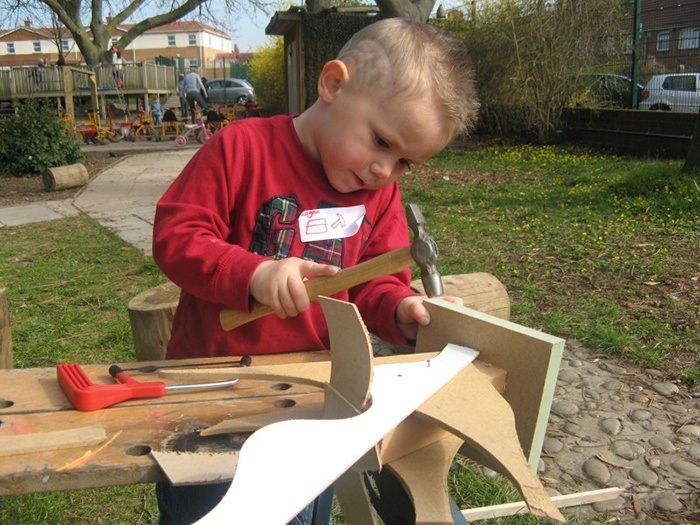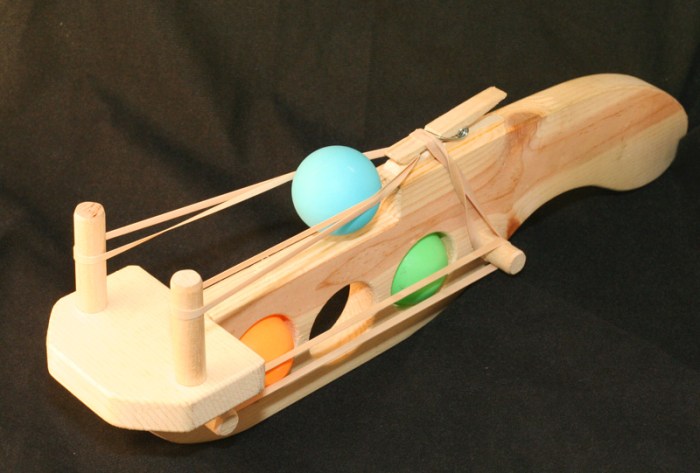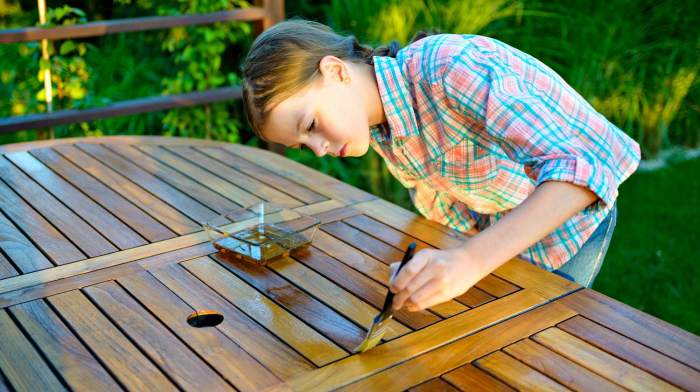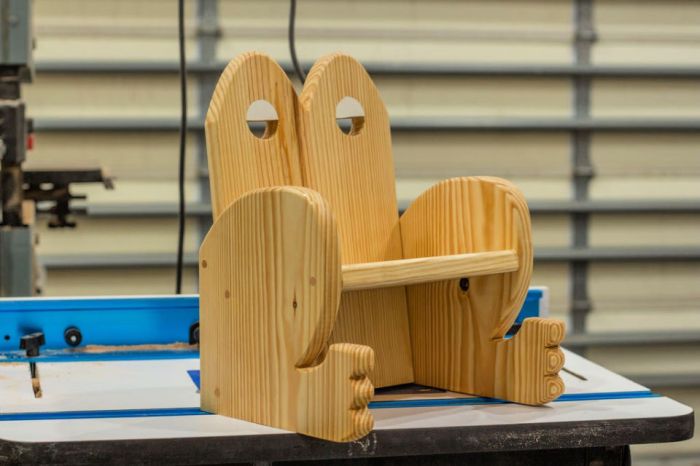Kids woodworking projects are more than just building things; they’re a gateway to creativity, problem-solving, and hands-on learning. From simple birdhouses to intricate furniture, woodworking allows children to explore their imagination and develop valuable skills. Whether it’s hammering a nail or sanding a surface, each project teaches patience, precision, and a sense of accomplishment.
This guide will take you through the world of kids’ woodworking, providing everything you need to get started, from safety tips to project ideas for all ages and skill levels. We’ll also explore the educational benefits of woodworking and offer resources to help you and your child embark on this exciting journey.
The Appeal of Woodworking for Kids
Woodworking is a fantastic activity for kids of all ages, offering a unique blend of creativity, problem-solving, and hands-on learning. It’s not just about building things; it’s about fostering valuable skills that will benefit them throughout their lives.
Benefits of Woodworking for Children
Woodworking offers a multitude of benefits for children, including:
- Developing Fine Motor Skills: Woodworking involves precise movements, requiring children to use their hands and fingers with dexterity. This helps refine their hand-eye coordination and motor control, essential for tasks like writing, drawing, and playing musical instruments.
- Boosting Problem-Solving Abilities: From planning a project to overcoming challenges during construction, woodworking encourages children to think critically and creatively. They learn to analyze problems, identify solutions, and adapt their approach as needed.
- Nurturing Creativity: Woodworking allows children to express their imagination and bring their ideas to life. They can design and build unique creations, fostering their artistic expression and sense of individuality.
Fostering Accomplishment and Pride
The sense of accomplishment that comes with completing a woodworking project is invaluable for children. Seeing their ideas transformed into tangible objects boosts their confidence and self-esteem. They learn to persevere through challenges, develop a sense of pride in their work, and experience the satisfaction of creating something with their own hands.
- Building a Birdhouse: A child who successfully builds a birdhouse, from planning the design to assembling the pieces, feels a sense of accomplishment that goes beyond simply playing with a toy. They have created something functional and beautiful, which they can share with others.
- Designing a Wooden Toy: A child who designs and builds a wooden toy for a younger sibling experiences a sense of pride in giving a thoughtful and handmade gift. This fosters empathy and strengthens their understanding of the joy of giving.
Educational Value of Woodworking, Kids woodworking projects
Woodworking isn’t just a hobby; it’s an educational experience that strengthens STEM skills and spatial reasoning.
- STEM Learning: Woodworking involves understanding concepts like geometry, measurement, and physics. Children learn about different types of wood, tools, and techniques, which lays a foundation for STEM-related fields.
- Spatial Reasoning: Visualizing and understanding spatial relationships is crucial in woodworking. Children learn to interpret blueprints, measure distances, and visualize how pieces will fit together, developing their spatial reasoning abilities.
Safety First

Woodworking is a fun and rewarding hobby, but it’s essential to prioritize safety, especially when working with kids. It’s crucial to create a safe environment and teach them proper techniques to prevent injuries.
Proper Tool Usage
It’s crucial to teach kids how to use tools correctly and safely. Start with basic tools and gradually introduce more complex ones as they gain experience. Always supervise young woodworkers and ensure they understand the risks associated with each tool.
- Always wear safety glasses: This protects the eyes from flying debris.
- Use the right tool for the job: Using a tool for a task it’s not designed for can lead to accidents.
- Keep tools sharp: Dull tools are more dangerous than sharp ones because they require more force to use, increasing the risk of slipping or breaking.
- Store tools safely: When not in use, tools should be stored in a designated area, out of reach of children.
Supervision
Constant supervision is crucial, especially for young children. An adult should always be present to guide and monitor their activities, ensuring they follow safety guidelines.
- Never leave kids unsupervised in the workshop: Even for short periods, a watchful eye is essential.
- Teach kids to ask for help: Encourage them to seek assistance if they’re unsure about a task or tool.
- Set clear rules and boundaries: Establish a set of rules and expectations regarding tool usage, workspace behavior, and safety procedures.
Workspace Setup
A well-organized and safe workspace is essential for woodworking. Ensure the area is well-lit, free of clutter, and has adequate ventilation.
- Keep the workspace clean and tidy: A cluttered workspace increases the risk of tripping or falling, especially for kids.
- Use a workbench with a stable base: A sturdy workbench provides a secure platform for working on projects.
- Provide adequate lighting: Good lighting is essential for visibility and reduces eye strain.
Choosing Age-Appropriate Projects and Tools
Selecting projects and tools suitable for a child’s age and skill level is vital. Start with simple projects and gradually increase the complexity as their skills improve.
- Begin with simple projects: Simple projects, such as birdhouses or small boxes, allow kids to gain experience and build confidence.
- Choose tools with safety features: Tools designed specifically for kids often have safety features, such as blunt edges or reduced power.
- Gradually introduce more complex tools: As children gain experience, they can be introduced to more complex tools under supervision.
Beginner-Friendly Woodworking Projects for Kids: Kids Woodworking Projects
Starting with simple projects is a great way to introduce kids to woodworking. It helps them develop basic skills and build confidence. These projects are designed to be easy and fun, making the learning process enjoyable for young woodworkers.
Easy Woodworking Projects for Kids
Here are some beginner-friendly woodworking projects that kids can tackle:
- Wooden Coasters: This is a simple project that involves cutting squares of wood and sanding them smooth. Kids can decorate them with paint, markers, or decoupage.
- Birdhouse: Building a birdhouse is a fun and rewarding project. Kids can learn to use basic tools like a saw, hammer, and screwdriver. You can pre-cut the pieces for them, making it easier to assemble.
- Wooden Toy: A simple wooden toy, like a car or a truck, is a great way to introduce kids to woodworking. You can use pre-cut shapes or have them cut their own with supervision.
- Picture Frame: Making a picture frame is a great way for kids to personalize their creations. They can choose their favorite picture and create a frame to showcase it.
Detailed Instructions for Wooden Coasters
This project is perfect for young children as it requires minimal tools and skills.
- Materials:
- Scrap wood (plywood or hardwood)
- Saw (or pre-cut squares of wood)
- Sandpaper
- Wood glue (optional)
- Decorative materials (paint, markers, decoupage paper)
- Protective finish (polyurethane or varnish, optional)
- Tools:
- Measuring tape
- Pencil
- Safety glasses
- Steps:
- Measure and cut squares of wood to the desired size. You can use a saw or pre-cut squares. If you are using a saw, make sure to use safety glasses and have an adult supervise.
- Sand the edges of the squares to make them smooth.
- Decorate the coasters with paint, markers, or decoupage. You can use stencils or freehand designs.
- Apply a protective finish to the coasters (optional). This will help protect them from spills and scratches.
Adapting Projects for Different Skill Levels
You can adapt these projects to different skill levels and age groups by adjusting the complexity of the steps and the tools used.
- Younger children:
- Use pre-cut pieces of wood and simple tools.
- Focus on sanding and decorating.
- Supervise them closely and provide guidance.
- Older children:
- Let them cut their own pieces of wood with supervision.
- Introduce them to more complex tools, such as a drill or a router.
- Encourage them to design their own projects.
Intermediate Woodworking Projects for Kids

As kids gain experience and confidence in woodworking, they can move on to more challenging projects that allow them to explore more complex techniques and tools. Intermediate woodworking projects for kids can help them develop their skills and creativity while creating unique and functional pieces.
Choosing Intermediate Woodworking Projects
Intermediate woodworking projects for kids are those that involve more intricate designs, joinery techniques, and finishing methods. These projects allow kids to delve deeper into woodworking and explore their creativity.
- Birdhouses: These are popular intermediate projects that can be customized with different shapes, sizes, and designs. They involve techniques like cutting, sanding, and assembling, along with adding decorative elements like shingles or paint.
- Small Storage Boxes: These projects require kids to use joinery techniques like rabbets, dadoes, and dovetails to create strong and functional boxes. They can be designed with lids, hinges, and decorative elements like inlays or carvings.
- Wooden Toys: Kids can design and build a variety of wooden toys, such as cars, trucks, trains, or puzzles. These projects allow them to use different tools and techniques, and they can be customized with paint, stain, or other decorative elements.
- Simple Furniture: Kids can build simple furniture pieces like a stool, a small table, or a shelf. These projects introduce them to woodworking techniques like joinery, finishing, and sanding, and they can be customized with different styles and designs.
Advanced Techniques for Intermediate Projects
Intermediate woodworking projects often require kids to learn more advanced techniques, such as:
Joinery
- Rabbet Joints: These joints are used to create a groove in one piece of wood that fits into the edge of another piece. They are often used for creating boxes, drawers, and other structures that need to be assembled and disassembled.
- Dado Joints: These joints are similar to rabbets but are wider and used to create a recess in a piece of wood. They are often used for shelf supports, drawer runners, and other structural elements.
- Dovetail Joints: These joints are known for their strength and are often used for creating drawers and boxes. They are more complex to create but provide a very secure and durable joint.
Finishing
- Sanding: Sanding is an important step in woodworking to smooth out surfaces and prepare them for finishing. Kids can use different grits of sandpaper to achieve different levels of smoothness.
- Staining: Staining is used to color wood and enhance its natural grain. Kids can experiment with different types of stains to achieve different effects.
- Varnishing: Varnishing is used to protect wood from moisture, scratches, and other damage. Kids can use different types of varnish to achieve different levels of gloss or sheen.
Designing Unique Projects
Kids can design and create unique and personalized woodworking projects by incorporating their own ideas and creativity. They can explore different shapes, sizes, and designs, and add decorative elements like carvings, inlays, or paint.
Advanced Woodworking Projects for Kids

As kids gain experience and confidence in woodworking, they can take on more challenging projects. These projects allow them to explore advanced techniques, experiment with different materials, and create truly unique and functional pieces.
Using Specialized Tools and Techniques
Advanced woodworking projects often require the use of specialized tools and techniques. Here are some examples:
- Power tools: Power tools, such as table saws, routers, and planers, can significantly speed up the woodworking process and achieve precise cuts. However, it’s crucial to learn proper safety procedures and have adult supervision when using these tools.
- Joinery: Advanced joinery techniques, such as dovetail joints, mortise and tenon joints, and finger joints, create strong and visually appealing connections between pieces of wood. These techniques require precision and practice to master.
- Finishing: Finishing techniques, such as sanding, staining, and varnishing, can enhance the beauty and durability of woodworking projects. Understanding the different types of finishes and their applications allows for a customized and professional look.
Developing Personal Woodworking Styles
As kids progress in their woodworking skills, they can develop their own unique style. This involves exploring different woodworking genres and incorporating their own preferences and ideas into their projects.
- Furniture: Kids can create functional and stylish furniture pieces, such as chairs, tables, and shelves, by experimenting with different designs, materials, and finishes.
- Decorative items: Woodworking can be used to create decorative items, such as picture frames, wall art, and sculptures. These projects allow kids to express their creativity and personal style.
- Functional objects: Kids can also create functional objects, such as cutting boards, tool boxes, and jewelry boxes. These projects combine practicality with artistic expression.
Resources for Kids’ Woodworking
Getting started with woodworking can be exciting, and there are tons of resources out there to help kids learn and explore. This section will guide you through various online and offline resources, providing a comprehensive list of websites, books, clubs, and more to fuel your child’s woodworking journey.
Online Resources
Online resources are a fantastic way for kids to access information, inspiration, and guidance on woodworking. They offer a diverse range of content, from educational videos to online communities.
- Websites:
- Woodworking for Kids: This website provides a wealth of information on woodworking for kids, including project ideas, safety tips, and tool instructions. It features easy-to-follow tutorials and engaging articles that cater to young woodworkers.
- The Wood Whisperer: Although not specifically designed for kids, this website offers a vast library of woodworking videos and articles, including beginner-friendly projects. It’s a great resource for learning basic woodworking techniques and gaining inspiration.
- Ana White: This website features free woodworking plans for various projects, including furniture, toys, and home decor. Many of her plans are suitable for beginners, making it a great resource for kids looking for project ideas.
- Instructables: This website is a treasure trove of DIY projects, including woodworking. It allows users to share their projects, instructions, and tips.
- Educational Videos:
- YouTube Channels: Many YouTube channels are dedicated to woodworking, with tutorials tailored for kids. Some popular channels include “The Wood Whisperer,” “The King’s Woodshop,” and “The DIY Dad.”
- Online Courses: Platforms like Skillshare and Udemy offer online woodworking courses specifically designed for kids. These courses provide structured learning experiences with step-by-step instructions and guidance.
- Online Communities:
- Woodworking Forums: Online woodworking forums are excellent places for kids to connect with other woodworkers, ask questions, and share their projects. Popular forums include “Woodworking Talk” and “LumberJocks.”
- Social Media Groups: Facebook and Instagram have active woodworking groups where kids can find inspiration, share their work, and connect with other woodworkers.
Offline Resources
Offline resources provide a hands-on learning experience and opportunities for kids to connect with woodworking communities.
- Woodworking Clubs:
- Local Woodworking Clubs: Many communities have woodworking clubs that offer classes, workshops, and opportunities for kids to learn from experienced woodworkers.
- Boy Scouts and Girl Scouts: These organizations often offer woodworking badges and programs, providing structured learning experiences and opportunities for kids to develop their woodworking skills.
- Books:
- Woodworking for Kids: Several books are specifically designed for kids, offering step-by-step instructions, safety tips, and project ideas.
- General Woodworking Books: Even general woodworking books can be helpful for kids, as they provide a foundation in woodworking techniques and principles.
- Local Hardware Stores:
- Workshops and Classes: Some hardware stores offer woodworking workshops and classes specifically for kids, providing a hands-on learning experience with professional guidance.
- Tool Demonstrations: Hardware stores often have tool demonstrations, which can be helpful for kids to learn about different woodworking tools and their uses.
Inspiring Kids’ Woodworking Projects

Let’s dive into the world of woodworking projects that spark creativity and ignite a passion for crafting in young minds. Here’s a visual gallery showcasing a diverse range of projects, from simple to more complex, that demonstrate the potential of woodworking for kids.
A Visual Gallery of Kids’ Woodworking Projects
This gallery highlights the ingenuity and skill of young woodworkers, showcasing a variety of projects that demonstrate the versatility of woodworking.
- A Wooden Birdhouse: A classic beginner project, a wooden birdhouse is a perfect introduction to woodworking. It involves basic cuts, assembly, and finishing techniques, allowing kids to create a functional and decorative piece for their backyard. The image shows a charming birdhouse painted bright blue with a whimsical red roof.
- A Miniature Wooden Dollhouse: This project challenges young woodworkers to create a detailed and intricate structure. The image depicts a delightful dollhouse with a porch, windows, and a small chimney, showcasing the level of detail achievable with woodworking. The dollhouse is painted in soft pastels, adding to its charm.
- A Wooden Toy Train: A simple yet engaging project, a wooden toy train allows kids to explore basic woodworking techniques while creating a fun and functional toy. The image shows a brightly colored train with wheels that roll smoothly, capturing the imagination of any child.
- A Wooden Picture Frame: This project encourages creativity and personalization. Kids can design and create a unique frame to showcase their artwork or cherished photos. The image shows a rustic picture frame made from reclaimed wood, adding a touch of character and personalization.
- A Wooden Jewelry Box: This project involves intricate cuts, precise assembly, and finishing techniques. Kids can create a beautiful and practical jewelry box to store their treasures. The image showcases a delicate jewelry box with a hinged lid and a small drawer, showcasing the complexity of the project.
Closure
With a little guidance, patience, and a sprinkle of creativity, kids can transform wood into amazing creations. Woodworking offers a unique opportunity to learn, grow, and build something tangible. So, grab your tools, gather your materials, and let your child’s imagination take flight in the world of woodworking!
Essential FAQs
What tools are safe for kids to use?
Start with basic tools like hammers, screwdrivers, and hand saws. As they get older and more experienced, you can introduce more advanced tools like drills and sanders, always with proper supervision.
How can I find woodworking projects for my child’s age and skill level?
Many online resources and books offer age-appropriate projects. Start with simple projects like birdhouses or picture frames, then gradually progress to more complex ones.
What are some good resources for kids’ woodworking?
Websites like Instructables, Pinterest, and YouTube have a wealth of woodworking projects and tutorials. There are also many books and woodworking clubs dedicated to kids.
Kids woodworking projects are a great way to get them excited about creating and learning about tools. As they progress, you’ll need a good system for storing all their tools and materials. Check out some great ideas for woodworking storage to keep your workshop organized and your kids safe.
Once you’ve got that sorted, you can focus on helping them build their next masterpiece!
